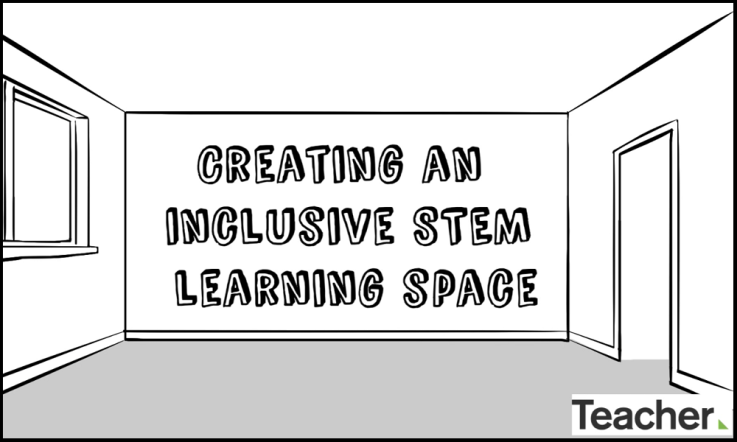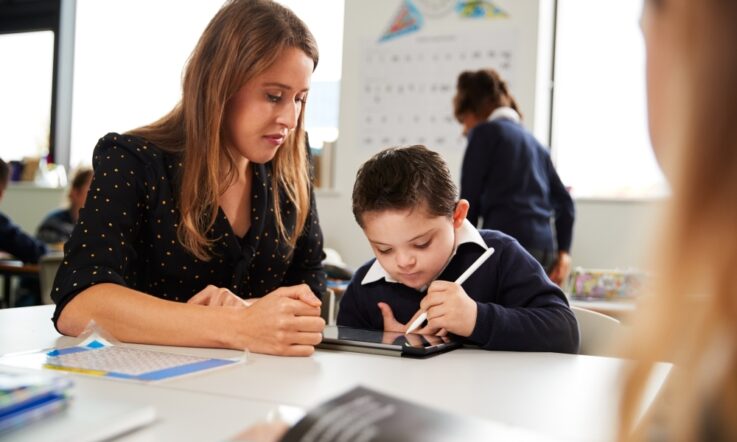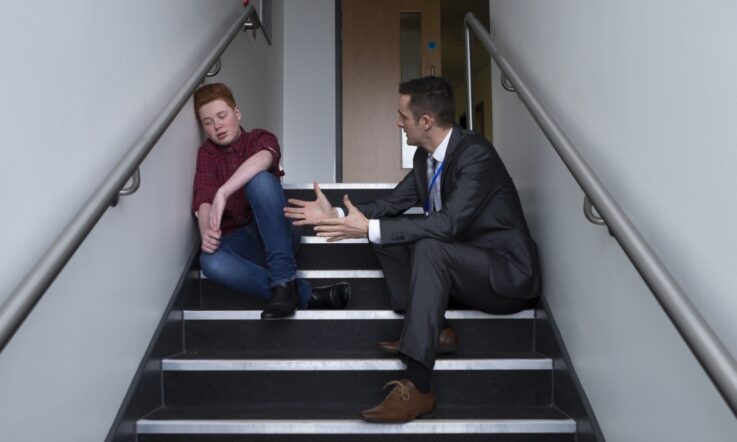What challenges do teachers face when delivering inclusive education? How could we begin to address this? In the first of two articles, Dr Erin Leif, Dr Laura Alfrey and Dr Christine Grove from Monash University explore these questions, and in tomorrow’s follow-up they’ll share some practical strategies for teachers.
The term ‘inclusive education’ often refers to teaching and learning experiences designed to support young people with disabilities or additional needs to participate and learn. In this instance, however, we seek to move away from labels that cause division. Instead, we view inclusive education as an opportunity to celebrate diversity via the creation of shared learning experiences that offer all students equal opportunity to participate and succeed. Whilst we strive to move beyond labels where possible, and our focus is on education for all, policy and research traditions mean that certain labels are referred to in this article.
The policy landscape
Over the past several decades, inclusive education has emerged as a core value of Australian society. The growth of the movement toward inclusion in education has been influenced by research findings demonstrating that students with disability can and do thrive academically, emotionally, and socially when educated side-by-side with their non-disabled peers. Such findings have in turn influenced policy development; current Australian legislation and policy dictate that we all, as educators, have an obligation to offer all students equal opportunity to participate and succeed at school.
Article 24 of the UN Convention on the Rights of Persons with Disabilities, for example, states that ‘without discrimination and on the basis of equal opportunity, [signatories] shall ensure an inclusive education system at all levels’. In an Australian context, the Mparntwe (Alice Springs) Declaration calls for inclusion to be a central thread of Australian education. The Declaration is guided by two interconnected goals: 1) The Australian education system promotes excellence and equity; and 2) All young Australians become:
- confident and creative individuals;
- successful lifelong learners; and,
- active and informed members of the community.
Furthermore, the Declaration states that all Australian Governments will work with the education community to, for example:
- Provide all young Australians with access to high-quality education that is inclusive and free from any form of discrimination;
- Recognise the individual needs of all young Australians, identify barriers that can be addressed, and empower learners to overcome barriers;
- Promote personalised learning and provide support that aims to fulfil the individual capabilities and needs of learners.
What are the benefits of inclusive education?
Inclusive education benefits students and the wider community in numerous ways. Inclusive education allows all learners, including those with disabilities and additional needs, to develop individual strengths, work at a level of optimal challenge, and foster feelings of belonging and inclusion.
A review of the evidence from more than 280 research studies conducted in 25 countries found that inclusive education is associated with higher educational attainment and improved social and emotional outcomes for students with disabilities (Hehir et al., 2016). In addition, the enactment of inclusive education allows young people to receive education in their local communities, which allows them to build social connections and an informal support network within their neighbourhood. Attending the local school in which the young person lives may reduce family stress related to travel time to and from school, feelings of isolation, and a lack of social support.
Building an inclusive culture within schools has been shown to reduce incidences of bullying and provide meaningful opportunities for all students to learn about difference and diversity. Of note, research has also shown that inclusive education is associated with higher educational attainment and improved social and emotional outcomes for students without disabilities (Hehir et al., 2016). This may be because educators in inclusive schools are more likely to use inclusive teaching practices and differentiate their instruction to give all students the opportunity to succeed. This will likely benefit students from culturally and linguistically diverse backgrounds and students with learning and thinking differences, but who do not have a disability.
However, delivering inclusive education is a dynamic and often challenging process that is always in flux.
What challenges do teachers face?
Despite continuing attempts to develop and sustain inclusive approaches in schools, it remains challenging. Numerous explanations have been put forth to explain why the enactment of inclusive education remains challenging in practice.
One reason is the limited focus on inclusive education within some initial teacher education or continuing professional development. As such, teachers have reported that they do not feel adequately prepared to teach inclusively because they have not had sufficient opportunities to develop necessary knowledge, skills and strategies. This is compounded by the fact that teachers have consistently reported that they lack sufficient time, resources, and support to plan and teach inclusively (Fox et al., 2021).
Teachers need time to plan high quality lessons that account for student diversity, time to enact differentiated learning that meets the needs of all students, and time to reflect on their own teaching practice to further refine their practice. Unfortunately, time for these important tasks seems to be the exception rather than the norm in today’s busy classrooms.
Whilst it can be beneficial for children with disabilities to attend mainstream schools, this is on the proviso that teachers have had sufficient opportunities to develop necessary knowledge, skills and strategies. As we have already mentioned, this is not always the case. Whilst diverse class spaces might create an ‘illusion of inclusion,’ they have the potential to do more harm than good if both teachers and students are not adequately supported.
Without sustained support (for both teachers and students), students with disabilities may continue to be exposed to low expectations or suffer negative social consequences like being excluded and bullied, which can result in depression, poor self-esteem, social isolation, suicidal ideation, and decreased academic performance (Sagun-Ongtangco et al., 2019).
Common components of effective inclusive schools
Extensive research has outlined several common, key components and qualities of effective inclusive schools, which include: supportive leadership; quality professional development; high-quality instruction using evidence-based approaches that focus on the abilities of children rather than their limitations; high teacher self-efficacy and a positive attitude towards inclusion; additional support for both children and teachers; and collaborative learning amongst children and between specialist teachers and general education teachers (Duncan et al., 2021; Lyons et al. 2016; Sharma et al., 2008).
If universities, schools, leadership and educators take action collectively, they are more likely to experience the benefits of inclusive education, as highlighted above. That is to say, they will be better placed to provide an effective and inclusive learning environment that meets the social, academic and developmental needs of students of all abilities or disabilities, cultural backgrounds, gender, economic status or difference. The answer perhaps lies in a quote from Lyons and colleagues (2016), that ‘progress and change are not possible without action’ (p. 903).
Stay tuned: In tomorrow’s article Dr Erin Leif, Dr Laura Alfrey and Dr Christine Grove present a practical and action-oriented approach for delivering inclusive education drawing on practices that many teachers are likely already using.
References
Duncan, J., Punch, R., & Croce, N. (2021). Supporting Primary and Secondary Teachers to Deliver Inclusive Education. Australian Journal of Teacher Education, 46(4), 6. http://dx.doi.org/10.14221/ajte.2021v46n4.6
Fox, R. A., Sharma, U., Leif, E. S., Stocker, K. L., & Moore, D. W. (2021). ‘Not Enough Time’: identifying Victorian Teachers’ Perceptions of the Facilitators and Barriers to Supporting Improved Student Behaviour. Australasian Journal of Special and Inclusive Education, First view, 1-16. https://doi.org/10.1017/jsi.2021.6
Hehir, T., Grindal, T., Freeman, B., Lamoreau, R., Borquaye, Y., & Burke, S. (2016). A Summary of the Evidence on Inclusive Education. Abt Associates. https://eric.ed.gov/?id=ED596134
Lyons, W. E., Thompson, S. A., & Timmons, V. (2016). ‘We are inclusive. We are a team. Let's just do it': commitment, collective efficacy, and agency in four inclusive schools. International Journal of Inclusive Education, 20(8), 889-907. https://doi.org/10.1080/13603116.2015.1122841
Sagun-Ongtangco, K. S., Medallon, K. G., & Tan, A. J. (2021). Inclusive classrooms: making it work for peers of children with disability. International Journal of Inclusive Education, 25(5), 623-639. https://doi.org/10.1080/13603116.2019.1568596
Sharma, U., Forlin, C., & Loreman, T. (2008). Impact of training on pre‐service teachers' attitudes and concerns about inclusive education and sentiments about persons with disabilities. Disability & society, 23(7), 773-785. https://doi.org/10.1080/09687590802469271
The authors of this article say ‘teachers have reported that they do not feel adequately prepared to teach inclusively because they have not had sufficient opportunities to develop necessary knowledge, skills and strategies’.
As a school leader, reflect on the professional development opportunities coming up for your staff. Is inclusive education covered? When was the last time you identified any areas of improvement for the knowledge, skills and strategies associated with inclusive education? In what other ways could you support your staff to teach inclusively?



